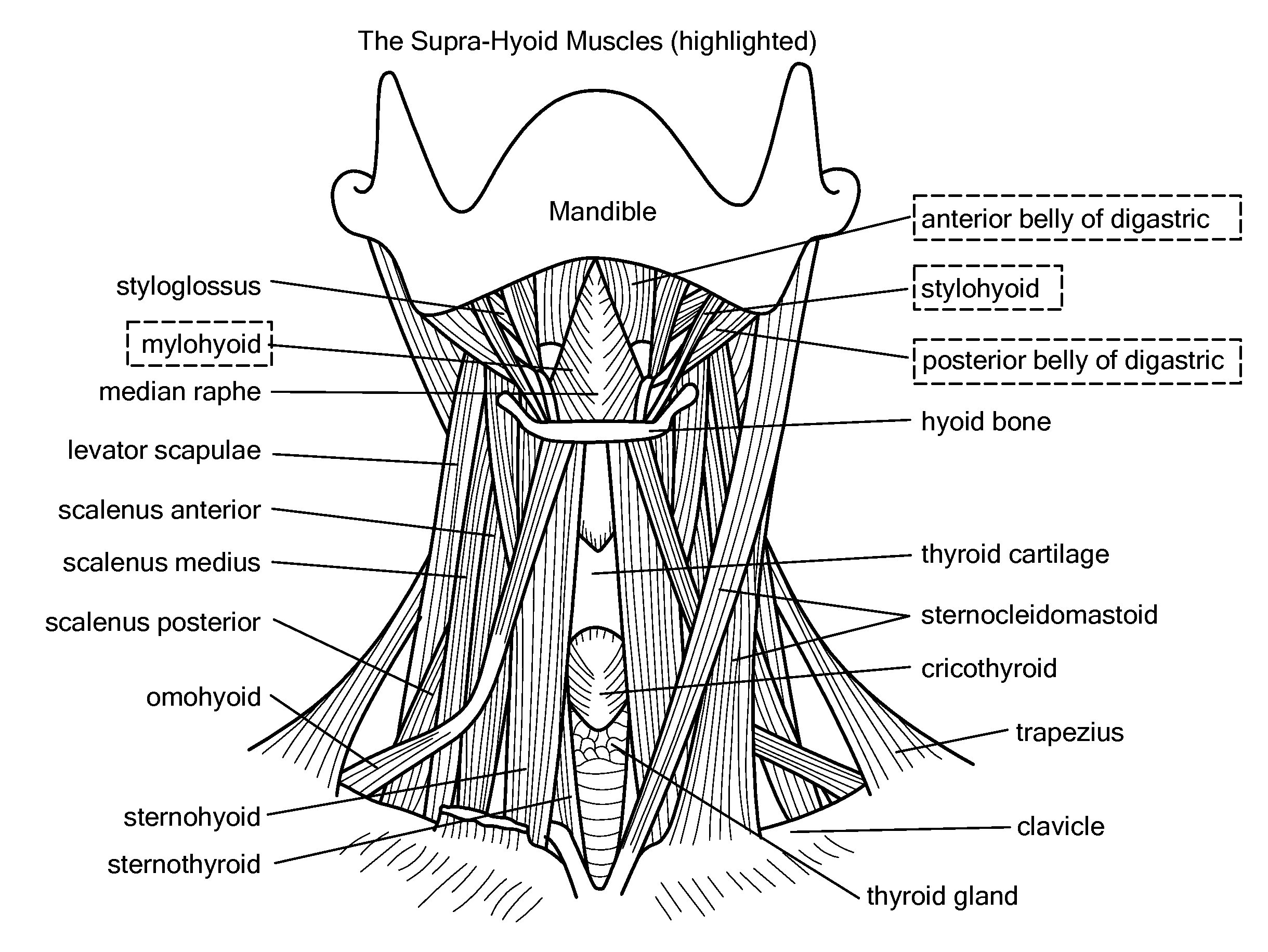Method for modifying larynx position by trans-positioning muscle and electrode stimulation
a technology of transpositioning muscle and electrode stimulation, applied in the field of controlling muscular activity by electrode stimulation, can solve the problems of swallowing disorders, poor control of some muscles in the upper respiratory system, and insufficient control of muscles needed for swallowing
- Summary
- Abstract
- Description
- Claims
- Application Information
AI Technical Summary
Problems solved by technology
Method used
Image
Examples
Embodiment Construction
[0008]In accordance with one embodiment of the invention, a method of modifying larynx position in a human subject includes cutting one end of the tendons of digastric muscle, attaching the cut end of the tendon of the digastric muscle to thyroid cartilage, thereby trans-positioning the digastric muscle, providing a stimulation electrode configured to stimulate the trans-positioned digastric muscle, generating at least one stimulation parameter for the stimulation electrode using a processor, and stimulating the trans-positioned digastric muscle with the stimulation electrode using the stimulation parameter in order to modify the larynx position.
[0009]In related embodiments, the one cut end may be the posterior belly of the digastric muscle. The stimulation may be electrical stimulation of the digastric muscle, its innervating nerves, and / or a reflex of the digastric muscle, such as the anterior digastric muscle. The method may further include providing a sensing electrode configure...
PUM
 Login to View More
Login to View More Abstract
Description
Claims
Application Information
 Login to View More
Login to View More - R&D
- Intellectual Property
- Life Sciences
- Materials
- Tech Scout
- Unparalleled Data Quality
- Higher Quality Content
- 60% Fewer Hallucinations
Browse by: Latest US Patents, China's latest patents, Technical Efficacy Thesaurus, Application Domain, Technology Topic, Popular Technical Reports.
© 2025 PatSnap. All rights reserved.Legal|Privacy policy|Modern Slavery Act Transparency Statement|Sitemap|About US| Contact US: help@patsnap.com



